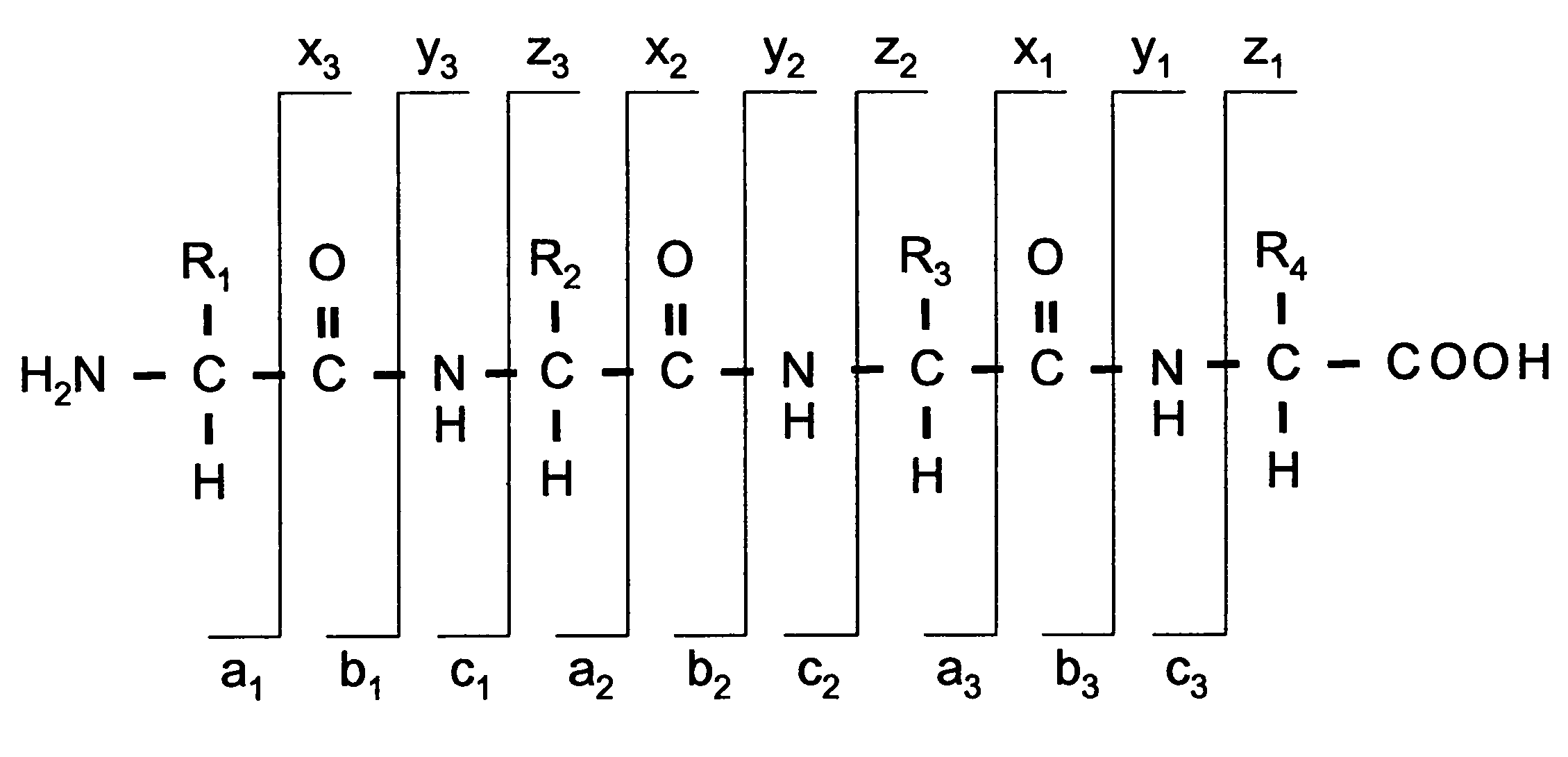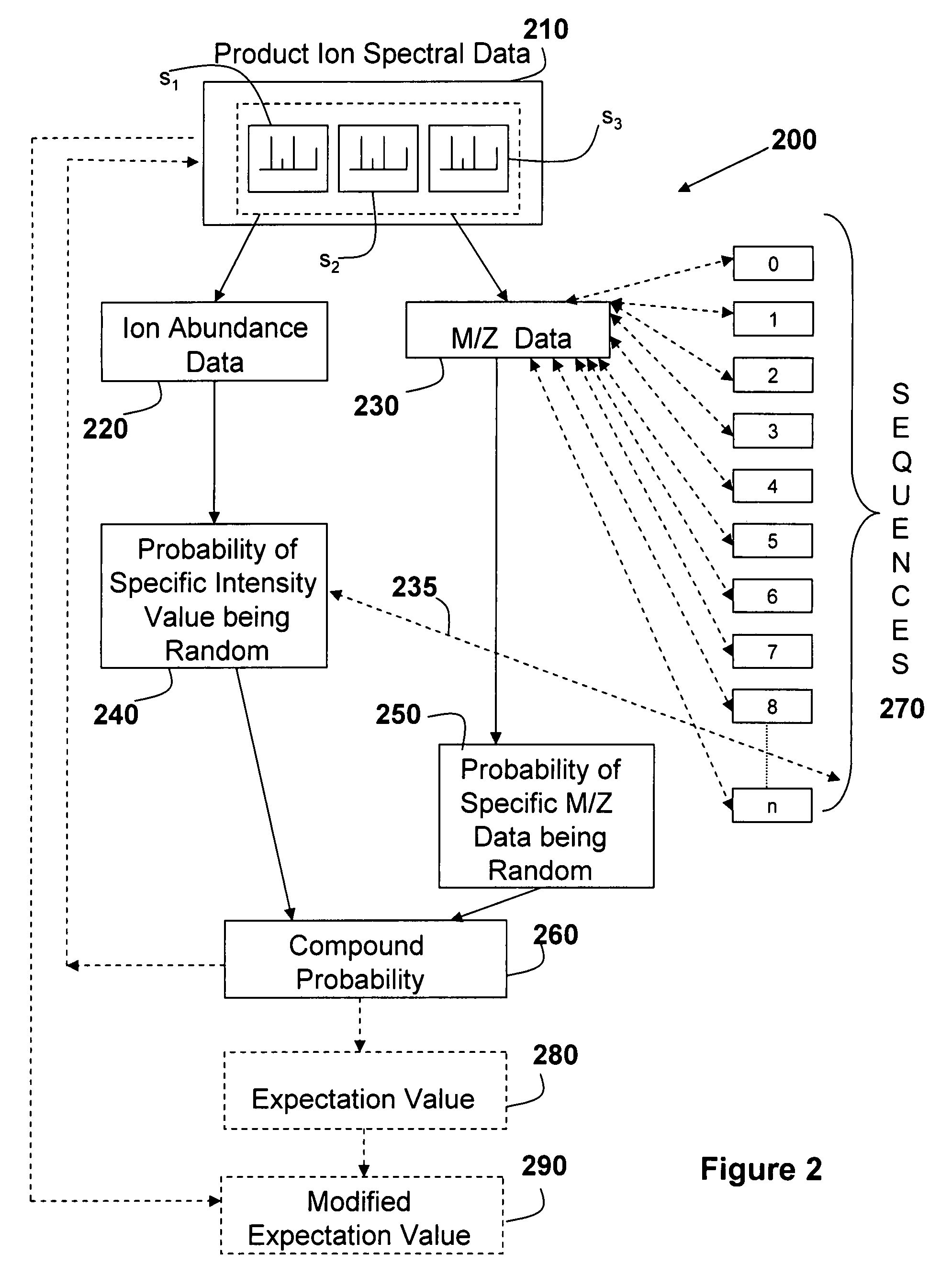Evaluating the probability that MS/MS spectral data matches candidate sequence data
a spectral data and probability analysis technology, applied in the field of processing data derived from mass spectrometric analysis of peptides and proteins, can solve the problems of low confidence that one has that a match is correct, complicated spectra created via etd fragmentation, etc., and achieve the effect of accurate prediction of probability
- Summary
- Abstract
- Description
- Claims
- Application Information
AI Technical Summary
Benefits of technology
Problems solved by technology
Method used
Image
Examples
Embodiment Construction
[0018]Before describing the invention in detail, a few terms that are used throughout the description are explained. A nomenclature typically adopted (and used herein) for the fragments of peptides and proteins has been suggested in the literature and is depicted in FIG. 1. The three possible cleavage points of the peptide backbone are called a, b and c when the charge is retained at the N-terminal fragment of the peptide and x, y and z when the charge is retained by the C-terminal fragment. The numbering indicates, which bond is cleaved counting from the N- and the C-terminus respectively, and thus also the number of amino acid residues in the fragment ion.
[0019]ETD is an ion-ion reaction in which the transfer of a thermal electron is exothermic and causes the peptide backbone to fragment by a non-ergodic process, i.e., a process does not involve intramolecular vibrational energy redistribution. ETD (as well as ECD) occurs on a time scale that is short compared with the internal en...
PUM
| Property | Measurement | Unit |
|---|---|---|
| mass spectrometer | aaaaa | aaaaa |
| mass-to-charge ratio | aaaaa | aaaaa |
| spectral intensity distribution | aaaaa | aaaaa |
Abstract
Description
Claims
Application Information
 Login to View More
Login to View More - R&D
- Intellectual Property
- Life Sciences
- Materials
- Tech Scout
- Unparalleled Data Quality
- Higher Quality Content
- 60% Fewer Hallucinations
Browse by: Latest US Patents, China's latest patents, Technical Efficacy Thesaurus, Application Domain, Technology Topic, Popular Technical Reports.
© 2025 PatSnap. All rights reserved.Legal|Privacy policy|Modern Slavery Act Transparency Statement|Sitemap|About US| Contact US: help@patsnap.com



